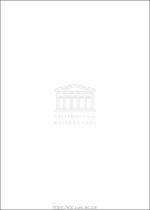| dc.description.abstract | The framework agreement in the year 2000 by the international community to launch Generation IV program with 10 nations, to develop safe and reliable nuclear reactors gave rise to the increased interest in the studies of SiC and the effect of different irradiations on solids. Silicon carbide is a preferred candidate used in harsh environments due to its excellent properties such as high chemical stability and strong
mechanical strength. The PBMR technology promises to be the safest of all nuclear technology that have been developed before. SiC has been considered one candidate material being used in the fabrication of pebble bed fuel cell. Its outstanding physical and chemical properties even at high temperatures render it a material of choice for the future nuclear industry as whole and PBMR in particular. Due to the hostile environment created during the normal reactor operation, some of these excellent properties are compromised. In order to use this material in such conditions, it should have at least a near perfect crystal lattice to prevent defects that could compromise its strength and performance. A proper knowledge of the behavior of radiation-induced defects in SiC is vital. During irradiation, a disordered crystal lattice occurs, resulting in the production of defects in the lattice. These defects lead to the degradation of these excellent properties
of a particular material. This thesis investigates the effects of various radiation effects to 6H-SiC. We have investigated the effects of radiation induced damages to SiC, with a description of the beds and the importance of the stability of the SiC-C interface upon the effects of radiations (y-rays, hot neutrons). The irradiated samples of 6H-SiC have been studied with various spectroscopic and structural characterization methods. The surface sensitive techniques such as Raman spectroscopy, UV-Vis, Photoluminescence and Atomic Force Microscopy will be employed in several complimentary ways to probe the effect of irradiation on SiC. The obtained results are discussed in details. | en_US |

